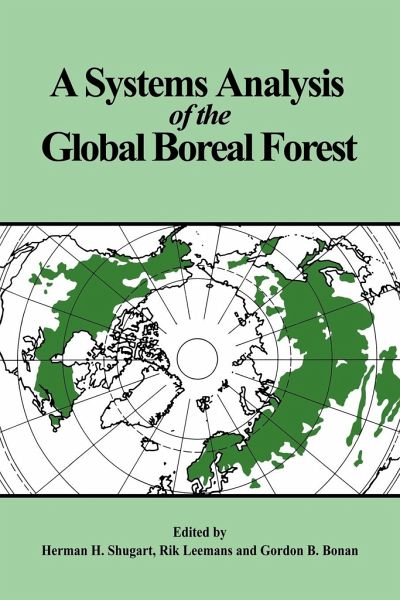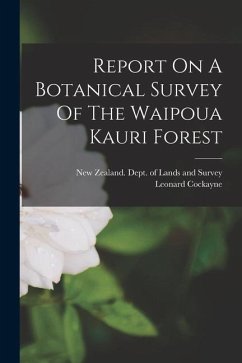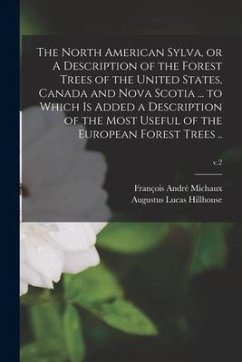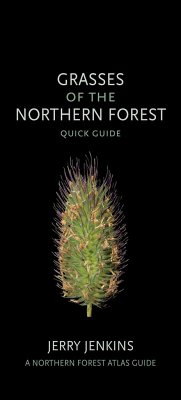
A Systems Analysis of the Global Boreal Forest
Versandkostenfrei!
Versandfertig in 1-2 Wochen
66,99 €
inkl. MwSt.

PAYBACK Punkte
33 °P sammeln!
This book provides a synthesis of the important patterns and processes which occur in boreal forests and reviews the principal mechanisms which control the forests' pattern in space and time.The boreal forests of the world, geographically situated to the south of the Arctic and generally north of latitude 50 degrees, are considered to be one of the earth's most significant terrestrial ecosystems in terms of their potential for interaction with other global scale systems, such as climate and anthropologenic activity. This book, developed by an international panel of ecologists, provides a synth...
This book provides a synthesis of the important patterns and processes which occur in boreal forests and reviews the principal mechanisms which control the forests' pattern in space and time.
The boreal forests of the world, geographically situated to the south of the Arctic and generally north of latitude 50 degrees, are considered to be one of the earth's most significant terrestrial ecosystems in terms of their potential for interaction with other global scale systems, such as climate and anthropologenic activity. This book, developed by an international panel of ecologists, provides a synthesis of the important patterns and processes which occur in boreal forests and reviews the principal mechanisms which control the forests' pattern in space and time. The effects of cold temperatures, soil ice, insects, plant competition, wildfires and climatic change on the boreal forests are discussed as a basis for the development of the first global scale computer model of the dynamical change of a biome, able to project the change of the boreal forest over timescales of decades to millennia, and over the global extent of this forest.
Table of content:
List of contributors; 1. Introduction Herman H. Shugart, Rik Leemans and Gordon B. Bonan; Part I. Processes in Boreal Forests Gordon B. Bonan: 2. Silvics of the circumpolar boreal forest tree species Nedialko Nikolov and Harry Helmisaari; 3. The reproductive process in boreal forest trees John C. Zasada, Terry L. Sharik and Markku Nygren; 4. Soil temperature as an ecological factor in boreal forests Gordon B. Bonan; 5. Fire as a controlling process in the North American boreal forest Serge Payette; 6. The role of forest insects in structuring the boreal landscape C. S. Holling; Part II. Patterns in Space and Time in Boreal Forests Herman H. Shugart: 7. The transition between boreal forest and tundra Luc Sirois; 8. The southern boreal-northern hardwood forest border John Pastor and David J. Mladenoff; 9. Transitions between boreal forest and wetland F. Z. Glebov and M. D. Korzukhin; 10. Remote sensing technology for forest ecosystem analysis K. Jon Ranson and Darrel L. Williams; 11. The nature and distribution of past, present and future boreal forests: lessons for a research and modeling agenda Allen M. Solomon; Part III. Computer Models for Synthesis of Pattern and Process in the Boreal Forest Rik Leemans: 12. Individual-tree-based models of forest dynamics and their application in global change research Herman H. Shugart and I. Colin Prentice; 13. Population-level models of forest dynamics M. D. Korzukhin and M. Ya. Antonovski; 14. A spatial model of long-term forest fibre dynamics and its applications to forests in western Siberia M. Ya. Antonovski, M. T. Ter-Mikaelian and V. V. Furyaev; 15. A simulation analysis of environmental factors and ecological processes in North American boreal forests Gordon B. Bonan; 16. The biological component of the simulation model for boreal forest dynamics Rik Leemans; 17. Role of stand simulation in modeling forest response to environmental change and management interventions Peter Duinker, Ola Sallnäs and Sten Nilsson; 18. Concluding comments Herman H. Shugart, Rik Leemans and Gordon B. Bonan; References; Index.
The boreal forests of the world, geographically situated to the south of the Arctic and generally north of latitude 50 degrees, are considered to be one of the earth's most significant terrestrial ecosystems in terms of their potential for interaction with other global scale systems, such as climate and anthropologenic activity. This book, developed by an international panel of ecologists, provides a synthesis of the important patterns and processes which occur in boreal forests and reviews the principal mechanisms which control the forests' pattern in space and time. The effects of cold temperatures, soil ice, insects, plant competition, wildfires and climatic change on the boreal forests are discussed as a basis for the development of the first global scale computer model of the dynamical change of a biome, able to project the change of the boreal forest over timescales of decades to millennia, and over the global extent of this forest.
Table of content:
List of contributors; 1. Introduction Herman H. Shugart, Rik Leemans and Gordon B. Bonan; Part I. Processes in Boreal Forests Gordon B. Bonan: 2. Silvics of the circumpolar boreal forest tree species Nedialko Nikolov and Harry Helmisaari; 3. The reproductive process in boreal forest trees John C. Zasada, Terry L. Sharik and Markku Nygren; 4. Soil temperature as an ecological factor in boreal forests Gordon B. Bonan; 5. Fire as a controlling process in the North American boreal forest Serge Payette; 6. The role of forest insects in structuring the boreal landscape C. S. Holling; Part II. Patterns in Space and Time in Boreal Forests Herman H. Shugart: 7. The transition between boreal forest and tundra Luc Sirois; 8. The southern boreal-northern hardwood forest border John Pastor and David J. Mladenoff; 9. Transitions between boreal forest and wetland F. Z. Glebov and M. D. Korzukhin; 10. Remote sensing technology for forest ecosystem analysis K. Jon Ranson and Darrel L. Williams; 11. The nature and distribution of past, present and future boreal forests: lessons for a research and modeling agenda Allen M. Solomon; Part III. Computer Models for Synthesis of Pattern and Process in the Boreal Forest Rik Leemans: 12. Individual-tree-based models of forest dynamics and their application in global change research Herman H. Shugart and I. Colin Prentice; 13. Population-level models of forest dynamics M. D. Korzukhin and M. Ya. Antonovski; 14. A spatial model of long-term forest fibre dynamics and its applications to forests in western Siberia M. Ya. Antonovski, M. T. Ter-Mikaelian and V. V. Furyaev; 15. A simulation analysis of environmental factors and ecological processes in North American boreal forests Gordon B. Bonan; 16. The biological component of the simulation model for boreal forest dynamics Rik Leemans; 17. Role of stand simulation in modeling forest response to environmental change and management interventions Peter Duinker, Ola Sallnäs and Sten Nilsson; 18. Concluding comments Herman H. Shugart, Rik Leemans and Gordon B. Bonan; References; Index.










![Diseases of Forest Trees [microform]: an Address Delivered by Mr. H.T. Güssow Before the First Annual Meeting of the Commission of Conservation Cover Diseases of Forest Trees [microform]: an Address Delivered by Mr. H.T. Güssow Before the First Annual Meeting of the Commission of Conservation](https://bilder.buecher.de/produkte/66/66128/66128245n.jpg)



![A Description of the Forest and Ornamental Trees of New Brunswick [microform] Cover A Description of the Forest and Ornamental Trees of New Brunswick [microform]](https://bilder.buecher.de/produkte/66/66200/66200114n.jpg)